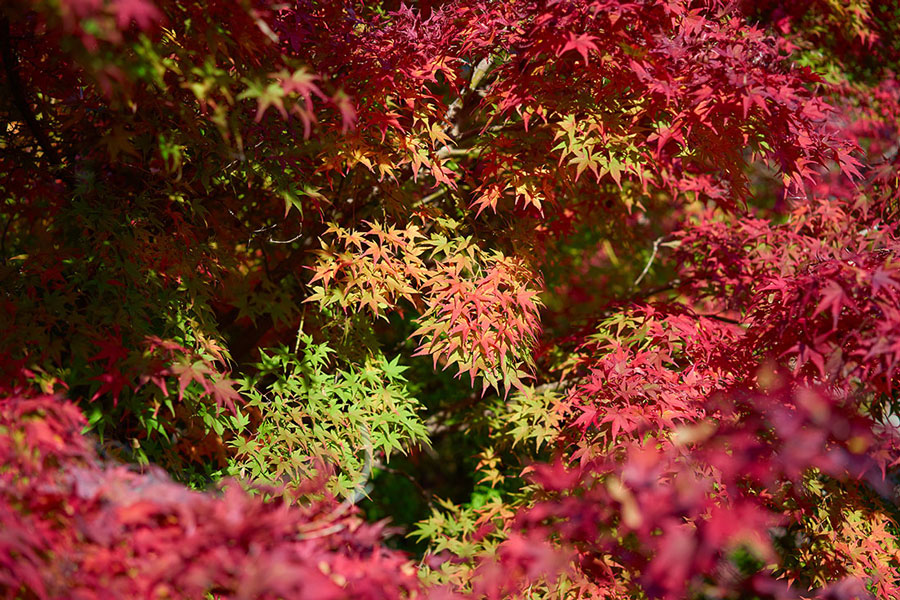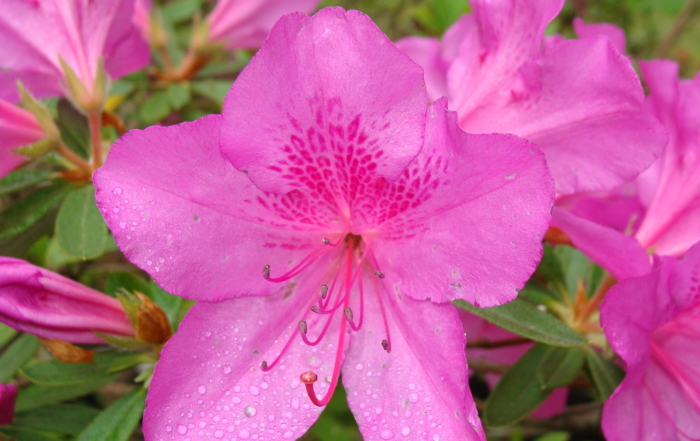Whether you’re looking for a show-stopper or a shade-maker, there are many fine choices to fill the perfect spot in your lot. Forego the builder-grade basic by adding something special for you and your family to enjoy. It’s important to consider the size of your space (both height and width), sunlight and soil drainage. Be considerate of rooflines and power lines, imagining what the tree might be in 20 years.
Use this list to spark your imagination of how to beautify your Alabama yard with several special trees and enjoy the benefits they bring. Your local Alabama garden center is sure to carry a great selection of unique trees like these. If they don’t have it in stock, they may order it for you.
Special Specimen Trees:
- Saucer and Star Magnolias (Magnolia x soulangeana, Magnolia stellata) Zones 5-9. These are the queens of those first spring days, all branches cloaked in pink, purple or white tulip-shaped blossoms that stop traffic. Many varieties are available, ranging from 10-20’ in height. Deciduous. Early blooming, so buds are susceptible to freezes in Northern areas.
- Japanese Snowbell (Styrax japonicus) Zones 5-8. A compact deciduous 20-30’ tree perfect for placing near a patio or walkway, or shading a garden seat. Delicate clusters of bell-shaped white flowers dangle underneath the foliage, attractive to both bees and people.
- Japanese Crepe Myrtle (Lagerstroemia fauriei) Zones 7-9. Not your common crepe myrtle, this cultivar looms a bit taller (30’) and broader (15-20’). Trained as a single- or multi-trunk, the gray and cinnamon-red bark’s peeling nature is a prime attraction. Great fall color.
- Cornelian Cherry (Cornus mas) Zones 4-8. Clusters of early yellow flowers form on branches before leaves, putting on one of the first spring shows. Flowers form into red elongated, dangling edible fruits late summer. Can be trained as a hedge, small tree, or allowed to reach 25’ (depending on variety).
- Japanese Maples (var. Acer palmatum) Zones 5-8. Choose from many sizes, forms and colors for a specimen planting with sculpture qualities. Whether planted in a pot as a focal point, or in a landscape border for height, maples bring four-season benefits with interesting seeds, spring color flush, and glowing fall foliage.
Larger Shade / Canopy Trees:
- Sugar Maple (Acer saccharum) Zones 3-8. A beloved NE native known for exceptional fall color. Consider cultivars with shorter growth habits for the landscape, such as ‘Legacy’ or ‘Bonfire’ (50’ high, 35’ wide), producing stunning red-orange fall color.
- Katsura (Cercidiphyllum japonicum) Zones 4-8. At 40+ feet, a katsura tree is a good choice for a large understory or shade tree, providing gold-to-red fall color on heart-shaped leaves.
Trees with Neat Characteristics:
- Big Leaf Magnolia (Magnolia macrophylla) Zones 5-8. Known for it’s giant, oblong leaves reaching up to 30 inches, Big Leaf has the largest simple leaves of any tree indigenous to North America. A treasure to discover in the wild Southeastern landscape, it’s a neat option for a sloped, lightly-shaded landscape where flowers and seed cones can be viewed from an above deck or terrace.
- Fringe Tree (Chionanthus virginicus, our native) or Chinese Fringe Tree (Chionanthus retusus) Zones 5-9. A smaller (12-20’) showy tree covered with feathery chandeliers of snow-white flowers in late spring. Nice fall color.
- River Birch (Betula nigra) Zones 4-9. A fast-growing single- or multi-trunked specimen tree that thrives in wetter soil. The bark is its claim to fame, though yellow fall foliage is also worthy. Sheets of pinkish-gray bark peel back to reveal cinnamon-brown inner layers. Can reach 70’.
- Serviceberry (Amelanchier arborea) Zones 4-9. A small tree with year-round interest, serviceberry is popular due to its abundant blooms, berries and fall color. White five-petaled flowers appear before foliage in spring, soon becoming attractive purple-black berries for people and wildlife alike. In tree form, typically reaches 15-25 feet tall.
Want to know what these trees will look like fully grown?
Botanical gardens and university campuses are incredible resources of local Alabama arboretums. They may promote monthly lists of what is currently in bloom, or have maps to guide you to specimen plantings. Inquire at:





